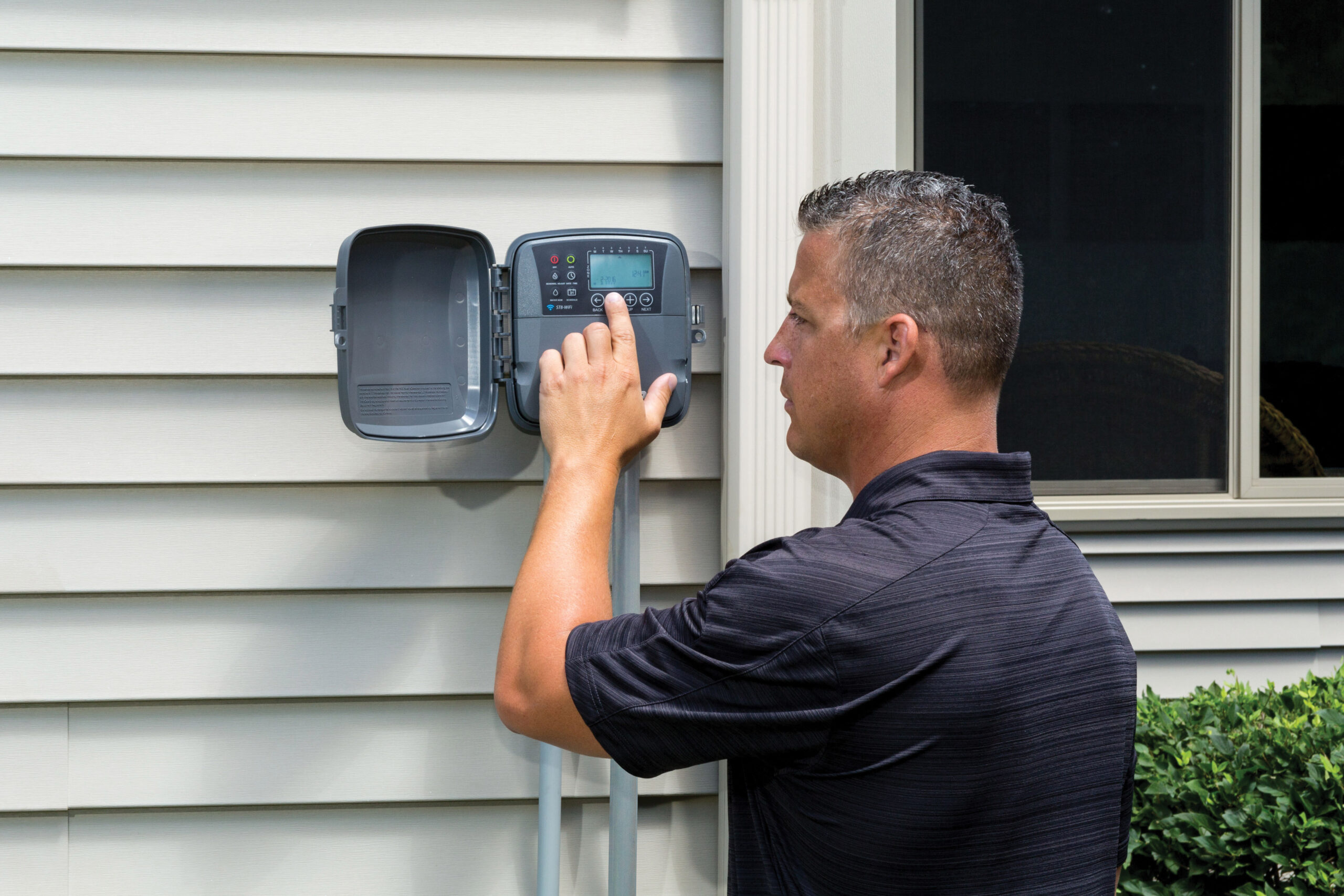Topic(s): Smart IrrigationWinterizing
Winterizing an Irrigation Controller

Whether you’re a seasoned professional or new to sprinklers, winterization of your irrigation system is a critical step in maintaining its peak performance.
If your Rain Bird timer is installed in an indoor location (such as a garage or shed), or if it’s mounted on the exterior of your home, the process is the same, and it’s rather simple.
Set the controller to “OFF” mode, unplug the transformer from the AC power outlet, and wrap the cord over the unit to prevent a potential safety hazard. For outdoor timers that are hard wired, it’s not necessary to disconnect the power. If the unit doesn’t have AC power for more than a week, the date and time will need to be reset when the power is restored. This conserves battery power for future outages. Program details are kept in long term non-volatile memory, so they’re not lost even after long power outages. For outdoor models with a case designed specifically for the elements, don’t forget to close the controller door to protect the unit from inclement weather.
While turning the controller off is one step in winterizing your irrigation system, remember to also turn off the water at the main valve, as well as blow out all water from any irrigation components to prevent freezing and the potential for breakage.
For additional assistance winterizing your irrigation system, it’s recommended you contact a certified irrigation professional that’s trained on how to design, install and maintain your system throughout the year.
Do you have suggestions to make this article more helpful?